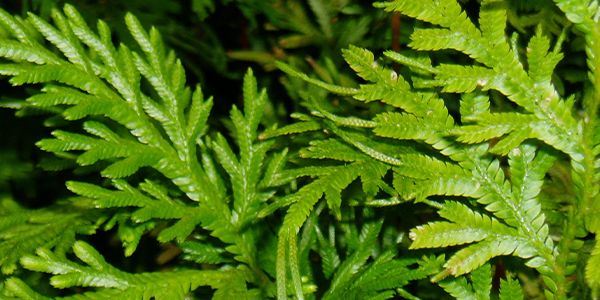Selaginella price

Where to buy and sell Selaginella, lowest (cheapest) and highest price.
check offers buy sell SelaginellaToday price for SelaginellaSelaginella wholesale prices 2022
The Current commodity price of Selaginella per kg, pound in the world in the global markets
selaginella
Price range: 1.5 - 1.5 EUR / 1 kg | Market: Mercados de Abastecimientos de Barcelona SA | Date: 2022-11-20
selaginella
Price range: 1.5 - 1.5 EUR / 1 kg | Market: Mercados de Abastecimientos de Barcelona SA | Date: 2022-06-05
Selaginella
Selaginella is a plant genus that includes more than 700 species. These plants are commonly known as spike mosses orclubmosses. Selaginellas are small, evergreen, vascular plants that typically grow in moist habitats. The leaves of these plants are scale-like and arranged in spirals. The stems of Selaginella plants are often branched, and the plant produces sporangia (structures that contain spores) at the tips of the stems. Selaginellas reproduce via spores, which are released from the sporangia and germinate to form new plants. Selaginella plants are native to all continents except Antarctica. They grow in a variety of habitats, including forests, deserts, and wetlands. Many Selaginella species are epiphytes, meaning they grow on other plants or objects. Some Selaginella species are used as ornamental plants, and others are used in traditional medicine. Selaginella plants are small and often inconspicuous. The leaves are scale-like and arranged in spirals. The stems are often branched, and the plant produces sporangia (structures that contain spores) at the tips of the stems. The plants reproduce via spores, which are released from the sporangia and germinate to form new plants. Selaginella plants are native to all continents except Antarctica. They grow in a variety of habitats, including forests, deserts, and wetlands. Many Selaginella species are epiphytes, meaning they grow on other plants or objects. Some Selaginella species are used as ornamental plants, and others are used in traditional medicine. Selaginella plants are small and often inconspicuous. The leaves are scale-like and arranged in spirals. The stems are often branched, and the plant produces sporangia (structures that contain spores) at the tips of the stems. The plants reproduce via spores, which are released from the sporangia and germinate to form new plants. Selaginella plants are very easy to cultivate and make excellent houseplants. They can be propagated by division, or by rooting stem cuttings. Selaginella does best in bright, indirect light but will tolerate lower light levels. Allow the soil to dry out slightly between watering. These plants are not tolerant of frost and should be protected from cold drafts. Selaginella plants are very easy to cultivate and make excellent houseplants. They can be propagated by division, or by rooting stem cuttings. Selaginella does best in bright, indirect light but will tolerate lower light levels. Allow the soil to dry out slightly between watering. These plants are not tolerant of frost and should be protected from cold drafts. To propagate by division, simply divide the plant into several sections, making sure that each section has its own roots. Plant the divisions in fresh potting mix and water well. To propagate by stem cuttings, take a cutting from the tips of the plant and root it in a moist potting mix. Keep the cutting in bright, indirect light and water regularly. Once the roots have developed, you can transplant the cutting into its own pot.Global selaginella production
The plant genus Selaginella comprises approximately 700 species of mossy, lycopod-like plants that are distributed worldwide. These plants are commonly known as "resurrection plants" due to their ability to revive after being dried out for extended periods of time. Selaginella plants are typically small in size, with some species only growing to a few centimeters in height, and have creeping or prostrate growth habits. The leaves of Selaginella plants are small and scale-like and arranged in pairs along the stem. The stems of these plants are often covered in spines or scales, which help the plant retain water. The reproductive structures of Selaginella plants are relatively simple and consist of either sperm-producing antheridia or egg-producing archegonia. Selaginella plants reproduce via spores, which are produced in sporangia that are located on the underside of leaves. Selaginella plants have a wide range of uses, both in horticulture and traditional medicine. These plants are commonly used as ornamental ground cover, and several Selaginella species are cultivated as houseplants. In traditional medicine, Selaginella plants have been used to treat a variety of ailments, including stomach problems and respiratory infections. Global production of Selaginella plants is difficult to estimate due to the large number of species that are used for a variety of purposes. However, it is estimated that the global market for Selaginella plants is worth several million dollars annually.Download our new
Husfarm App
Stay up to date with the current prieces of agricultural products all over the world.
Do you want to sell agricultural products?
Are you an Agricultural processor looking for high-quality products to buy?
Post an ad for FREE!
